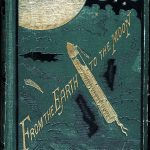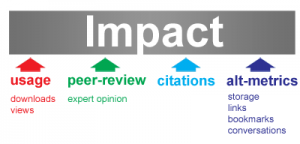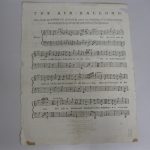 The Smithsonian Libraries still has several internship projects available for fall of this year and spring of 2013. Although these projects are unpaid, we are happy to work with your school to help you obtain credit. Below are a few brief descriptions. Please see our website (http://library.si.edu/internships) for more details and application instructions.
The Smithsonian Libraries still has several internship projects available for fall of this year and spring of 2013. Although these projects are unpaid, we are happy to work with your school to help you obtain credit. Below are a few brief descriptions. Please see our website (http://library.si.edu/internships) for more details and application instructions.
Month: August 2012

I was saddened to learn that Russell Shank, 86, appointed by Smithsonian Secretary S. Dillon Ripley as the first director of the Smithsonian Libraries, died June 26 of complications from a fall. The 1978–1979 president of the American Library Association, he had been attending its 2012 Annual Conference in Anaheim at the time of his death, and was among the library leaders acknowledged at the June 21 Library Champions and Past Presidents Reception.

Now that our new website is up and running, we are planning the next phase of its development by deciding what features should and should not be part of the Digital Library. In any well-designed (web) project, there are hours and hours of planning and writing and discussing what the website will and will not do and this is an expected part of the process.
However, at the outset of our discussions, we had to discuss a the single most important part of the project: What is a digital library?
 The evaluation of research quality is a task which is attracting attention as the world turns more and more to evidence-based decision making. The work of scientists and historians are regularly reviewed by institutional administrators to ensure a high quality of scholarship and to determine where to deploy scarce resources. One of the most relied-upon components of research assessment is the review of publications authored by a particular scholar. And although publications are difficult to objectively evaluate, the standard method for many years was to use the journal impact factor. This method measured the number of times the articles from a particular journal were subsequently cited by other publications, for which a numeric score was assigned to the journal. It soon became prestigious for scholars to have their papers published in a journal with a high impact factor.
The evaluation of research quality is a task which is attracting attention as the world turns more and more to evidence-based decision making. The work of scientists and historians are regularly reviewed by institutional administrators to ensure a high quality of scholarship and to determine where to deploy scarce resources. One of the most relied-upon components of research assessment is the review of publications authored by a particular scholar. And although publications are difficult to objectively evaluate, the standard method for many years was to use the journal impact factor. This method measured the number of times the articles from a particular journal were subsequently cited by other publications, for which a numeric score was assigned to the journal. It soon became prestigious for scholars to have their papers published in a journal with a high impact factor.

Intrigued by the “Song of the Wright Brothers” sheet music cover seen in last week’s National Aviation Day post? Read on for more information about the collection in this post by summer intern, Karen Anton.
I am Karen Anton, the National Air and Space Museum (NASM) Sheet Music Cataloging intern for the Smithsonian Institution Libraries. I travelled from Bloomington, IN where I am pursuing a Master of Library Science (MLS) degree with a Rare Books and Manuscripts Librarianship Specialization at the Indiana University School of Library and Information Science and a PhD in Musicology at the Indiana University Jacobs School of Music. While at the Smithsonian this summer, I will be learning from Lowell Ashley, principal cataloger at the Smithsonian Institution Libraries.
“Where the fold should be / There is no fold” reads the entire tenth poem of Reading Red. Reading this poem is a jarring experience: the book has many folds, extra folds. Is the “fold” of the poem related to the physical construction of the book in which it is printed, or is it a statement about something outside the book? As this poem makes clear, the work is concerned with the physical form of its presentation.


